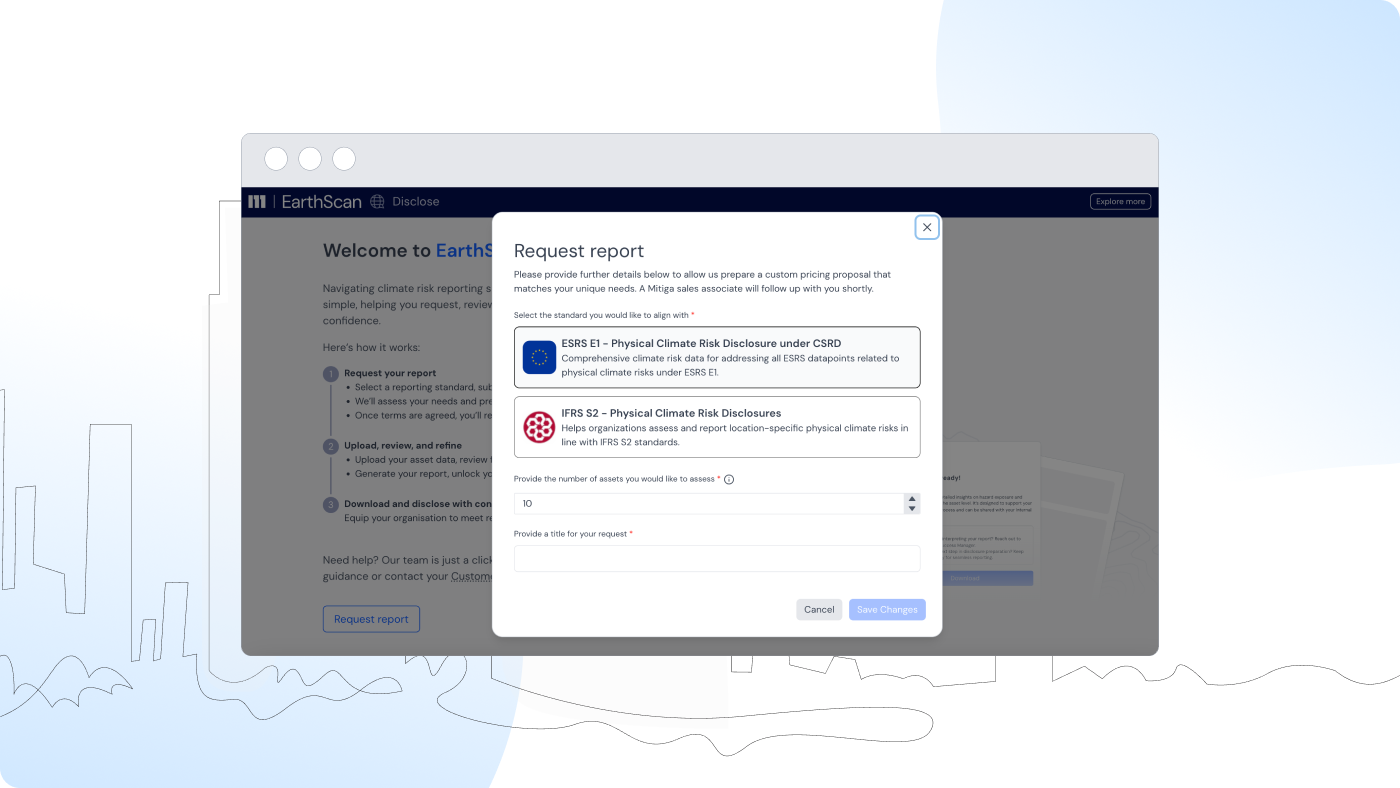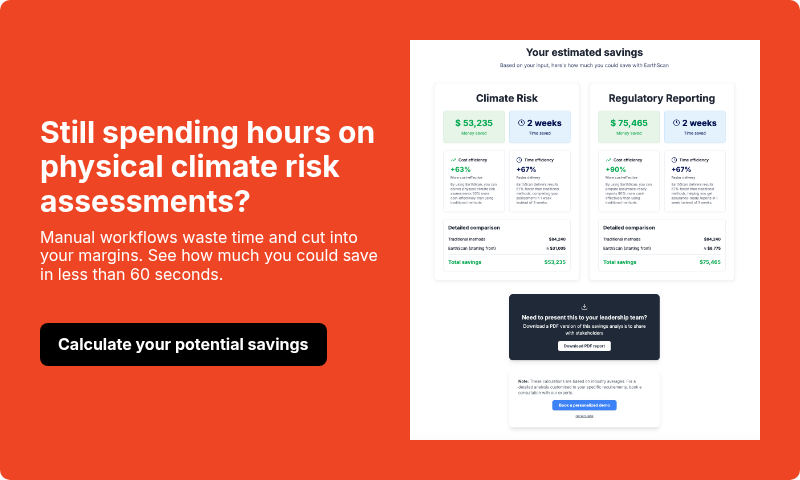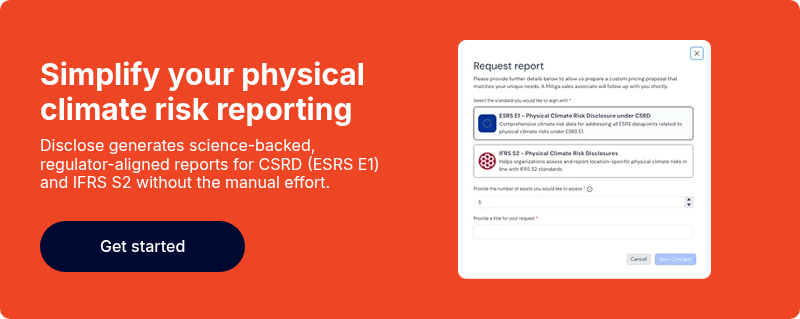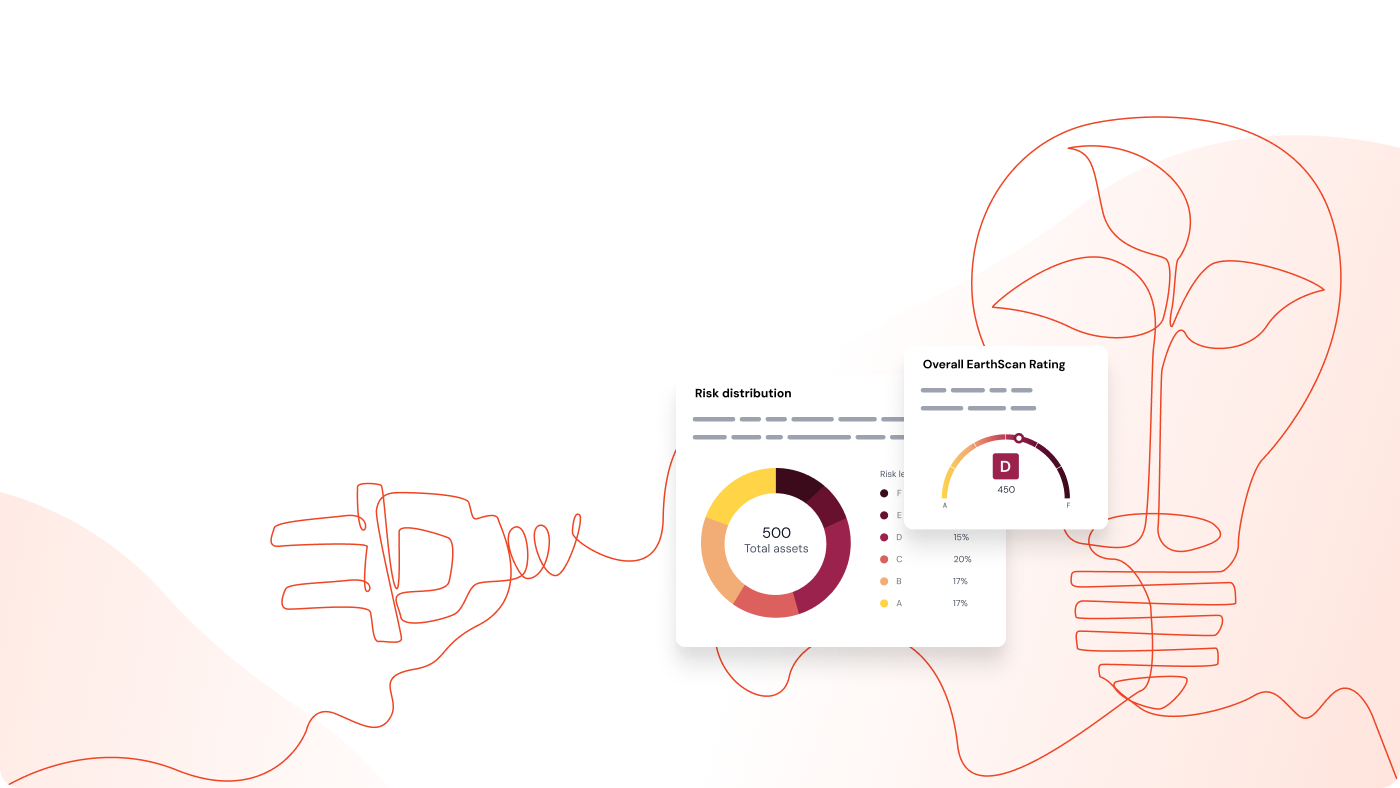California Senate Bill 261 (SB 261), also known as the Climate-Related Financial Risk Act, introduces mandatory climate risk disclosures for large companies operating in the state.
For the first time, companies with over $500 million in global annual revenue that do business in California will be required to publicly report on their exposure to climate-related financial risk and explain how they plan to manage it.
At the same time, IFRS S2 (International Financial Reporting Standards – Sustainability Disclosure Standard 2), the global standard developed by the International Sustainability Standards Board (ISSB), is becoming the benchmark for voluntary and investor-driven climate risk reporting.
As regulatory and market expectations converge, many companies are realising that the best way to prepare for SB 261 is to align early with IFRS S2.
In this article, we cover:
- What IFRS S2 and SB 261 require
- How they align and where they differ
- Why so many companies are underprepared
- How tools like Disclose can close the compliance gap
Whether you're advising clients or building your reporting strategy, this guide breaks down what you need to know and how to turn regulatory pressure into a strategic advantage.
What is IFRS S2?
IFRS S2 is a global climate disclosure standard developed by the International Sustainability Standards Board (ISSB).
It sets out what companies should disclose about the physical and transition risks posed by climate change and how those risks could affect their business.
Officially in effect since January 2024, IFRS S2 is the successor to the Task Force on Climate-related Financial Disclosures (TCFD) and is quickly becoming the global baseline for climate risk reporting.
While not yet mandatory in the US, IFRS S2 is being adopted in multiple jurisdictions, such as Australia (AASB S2) and the UK (SRS).
Quick facts about IFRS S2
- Issued by the International Sustainability Standards Board (ISSB), and built on the TCFD framework
- In effect since January 2024 (the standard is now available for use and adopted in jurisdictions such as the UK, Australia, Canada, and Singapore)
- Covers governance, strategy, risk management, and metrics & targets
- Aims to standardise how companies disclose climate-related financial risks
- Supports meeting regulations like SB 261 in California and aligns with local standards such as Australia’s AASB S2.
Who is using IFRS S2 and why it matters
While IFRS S2 is not currently mandatory in the US, it’s quickly becoming the global baseline for climate-related disclosures.
Public companies, large corporates, and investors with international exposure are under growing pressure to align with IFRS S2, especially those reporting to stakeholders in the UK, Brazil, or Australia, where regulators increasingly reference ISSB standards.
Even if your company isn’t required to report under IFRS S2 today, you’ll likely face expectations to align with it soon. Investors, clients, and business partners are already requesting climate risk data formatted according to ISSB guidance.
For US-based companies, particularly those preparing for California’s SB 261 or supporting global clients, understanding IFRS S2 now helps build future-proof reporting processes and avoid costly surprises as voluntary frameworks like IFRS S2 are increasingly referenced or adopted by regulators around the world.
Pro tip: Even if your company isn’t listed or headquartered in the US, you may still face mandatory disclosure under SB 261 if you do business in California. Aligning your approach with IFRS S2 can enhance consistency across jurisdictions and reduce duplication as more countries converge on common standards.
This is especially relevant if you're preparing for scrutiny under the UK’s Financial Conduct Authority (FCA) Listing Rules or the upcoming UK Sustainability Disclosure Standards (UK SRS), which reference IFRS S2 for physical climate-related disclosures. Similar expectations are also emerging from global investors and supply chain partners seeking reliable climate data.
What is SB 261?
SB 261 is a landmark climate risk disclosure law passed in California in 2023. It requires large companies doing business in the state to report their exposure to climate-related financial risks and how they’re managing them.
The goal is to increase transparency and help businesses, investors, and regulators understand the financial implications of climate change at the organisational level.
Who does it apply to?
SB 261 applies to any company, public or private, that:
- Does business in California
- Has annual revenues over $500 million, regardless of where they’re headquartered
This includes multinationals, large private firms, and investment groups with California operations or customers.
What does SB 261 require?
Starting in January 2026, affected companies must publish a climate-related financial risk report every two years.
That report must include:
- A description of the company’s physical and transition risks
- An explanation of how those risks are managed and mitigated
- Details on governance, strategy, and risk processes
Crucially, SB 261 requires companies to report using the disclosure recommendations of the TCFD or an equivalent framework that builds on its principles. Since TCFD was officially disbanded in 2023, and its principles are now fully embedded in IFRS S2, the new global standard is widely recognised as its successor.
That means companies can use IFRS S2 to meet SB 261 requirements without starting from scratch.
Key takeaway: SB 261 isn’t just for California-based companies. If your company does business in California and generates more than US$500 million in global annual revenue, you’ll likely be required to comply regardless of where you're headquartered.
One of the most challenging aspects? Scenario analysis, which requires credible data, consistent assumptions, and defensible methods.
Key requirements of SB 261
While some implementation details are still being defined by the California Air Resources Board (CARB), the core requirements of SB 261 are already clear and closely aligned with TCFD and IFRS S2 principles.
Under the law, companies must:
- Identify and assess physical and transition risks
Identify the climate-related risks, both physical (e.g. flooding, wildfire, heat stress) and transition (e.g. policy changes, market shifts) that could materially affect your operations, supply chains, and assets.
Then assess their potential financial impact over time, using climate scenarios and asset-level exposure data.
Note: Disclosures should be based on quantifiable risk assessments, not just narrative descriptions. Investors expect companies to use data-backed analysis to demonstrate how climate risks may impact financial performance.
- Report on financial materiality
Disclose which risks are financially material to your business and explain why. Under IFRS S2, this means focusing on how climate-related risks could affect your financial position, financial performance, or cash flows.
The goal is not just to identify where risks exist, but to show how they could influence business value and investor decisions.
- Disclose strategy and risk management approach
Explain how your company is governing, managing, and responding to climate-related financial risks.
This includes your internal processes, oversight structures, and whether scenario analysis or risk modelling is used to guide decisions.
For example, a manufacturing company may need to disclose how increasing heatwaves or water scarcity could disrupt operations at a key factory or distribution centre and whether those risks are factored into long-term investment planning, insurance coverage, or supply chain contracts.
IFRS S2 and SB 261: How they align
California’s SB 261 doesn’t reinvent the wheel. Instead, it explicitly allows companies to use internationally recognised standards to fulfil its disclosure requirements, including the IFRS Sustainability Disclosure Standards, of which IFRS S2 is the key standard for climate risk.
In practice, this means:
- If you’re already reporting under IFRS S2, you’re likely already meeting most, if not all of SB 261’s requirements.
- Companies that align with TCFD are also on the right track, since both of them share the same foundation.
Side-by-side alignment: IFRS S2 vs SB 261
Tip: If your consultancy or client is already preparing for IFRS S2 or a local equivalent like Australia’s AASB S2 or the UK Sustainability Disclosure Standards (UK SRS), much of that work can be repurposed for SB 261 compliance, especially around governance, strategy, and scenario analysis.
Why most companies aren’t ready
While IFRS S2 offers a clear structure for climate risk disclosure, many US-based companies, especially those with operations in California, are still underprepared for compliance with SB 261.
That’s not due to lack of interest, but because of 3 major blockers:
1. Regulatory complexity
The climate disclosure landscape is evolving fast. Between TCFD, the SEC climate rules, SB 253, SB 261, IFRS S2, and the EY’s CSRD, many teams are struggling to understand:
- What applies to them
- When deadlines kick in
- Which standards they need to follow
The result? Many companies wait too long to get started and then rush to catch up when enforcement nears.
2. IFRS S2 and the ISSB are still misunderstood in the US
Despite growing global adoption, IFRS S2 is still unfamiliar to most US companies. It's often assumed to be relevant only for large multinationals, but that’s no longer the case.
While the EU follows ESRS standards for CSRD reporting, countries like the UK have embedded TCFD-aligned frameworks into regulation, and their upcoming UK SRS will be based on IFRS S2.
In the US, California’s SB 261 requires companies to report using the TCFD framework or a recognised successor. Since TCFD was officially disbanded and its recommendations fully incorporated into IFRS S2, IFRS S2 now qualifies as a successor framework under SB 261.
3. Physical climate risk is hard to model at scale
Assessing physical climate risk is technically demanding and most companies aren’t equipped to do it properly.
- It requires understanding which specific climate hazards (e.g. flood, heat stress, wildfire) apply to your assets and modelling how those hazards might evolve under different emissions scenarios and time horizons.
- That analysis must then be linked to potential financial impacts, such as asset downtime, repair costs, or supply chain disruption.
- Finally, it needs to scale across entire asset portfolios in a way that’s consistent, transparent, and defensible, especially as disclosures face growing scrutiny from regulators, investors, and internal stakeholders.
Most organisations lack the specialist expertise, granular data, or tools to meet these demands, especially under new regulations like SB 261 or standards like IFRS S2.
Key takeaway: Most companies struggle because climate data is complex, decentralised, and hard to map to disclosure requirements. Having the right tools makes all the difference.
Starting early with a structured standard like IFRS S2 can prevent last-minute scrambles and reduce the cost and complexity of climate disclosure.
How Disclose helps you comply
Climate disclosure doesn’t need to be overwhelming, especially when you’re using a tool like Disclose, built to align with IFRS S2 standards and meet the reporting expectations of laws like SB 261.
Whether you’re a sustainability lead, consultant, or reporting officer, Disclose gives you a structured, science-backed way to produce robust physical climate risk reports without needing in-house climate scientists or complex modelling capabilities.
End-to-end physical climate risk assessments
Disclose generates science-backed physical climate risk reports, covering 10 key hazards (including flood, wildfire, drought, and heat stress) across three time horizons (short, medium, and long term) and emissions scenarios (Business as Usual, Emissions Peak by 2040, and Paris Aligned).
All you need to provide is asset location data (coordinates). Everything else is automated.
Quantify risk and financial impact
Disclose translates physical climate hazards into decision-useful insights. Built-in metrics help you assess hazard exposure and risk materiality at the asset or portfolio level, enabling both detailed site-level analysis and portfolio-wide reporting.
It helps you quantify:
- Asset-level exposure to each climate hazard
- Materiality indicators based on thresholds
- Forward-looking risk scores and financial impact estimates
This makes it easier to prioritise high-risk assets and back decisions with credible, scenario-based data.
Streamlined, disclosure-ready outputs
Disclose includes regulator-ready Excel templates aligned with IFRS S2, the global standard that satisfies climate risk disclosure requirements under SB 261.
You also get pre-built templates following the TCFD/ISSB structure, helping you structure disclosures efficiently, whether for internal review, board reporting, or external submission.
Fast, scalable workflow for consultants and internal teams
Built to reduce the reporting burden and scale across entire portfolios, Disclose lets you:
- Run quick trials or pilots before scaling
- Export disclosure-ready reports in minutes
- Request physical climate risk reports across multiple clients or subsidiaries
Tip: Already working with a third-party climate risk provider? Disclose can be used as a standalone tool or integrated into broader reporting workflows, giving you added flexibility without duplicating effort.
Final words
California’s SB 261 and IFRS S2 aren’t competing requirements. They’re part of the same global shift toward structured, scenario-based disclosure of climate-related financial risks.
Both are grounded in the principles of the TCFD framework, and both signal rising expectations for transparency, consistency, and science-backed reporting.
While SB 261 makes this disclosure mandatory for many companies, IFRS S2 offers a globally recognised way to meet those expectations. And if you're already reporting under Australia’s AASB 26 or preparing for the UK’s Sustainability Disclosure Standards, much of your groundwork can carry over.
That’s why reporting under IFRS S2 now sets you up for SB 261 compliance later and helps streamline global reporting obligations.
If you’re looking for a fast, low-effort way to get started, Disclose makes it easy to generate IFRS S2-aligned reports that meet California’s regulatory standards, turning complex climate science into clear, usable outputs.
Book a demo to see how it works in action.







